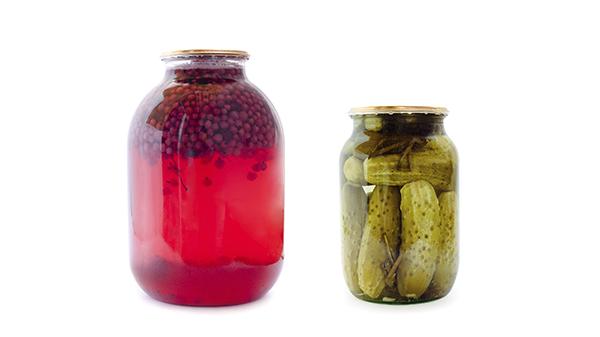
Thanksgiving dinner is filled with a much wider variety of foods than your every day supper menu. Which one of those traditional ingredients is most likely to contribute to acid indigestion1? In this experiment, you will use Go Wireless® pH to test the acidity of a variety of foods. The acidity of a solution can be expressed using the pH scale. Acidic solutions have pH values less than 7, basic solutions have pH values greater than 7, and neutral solutions have pH equal to 7.
A Go Wireless pH sensor, cranberry juice, canned chicken broth2, sweet pickle juice, distilled water for rinsing, cups, and a data-collection program are needed for this investigation.
Connect Go Wireless pH to LabQuest 2 or Graphical Analysis for iOS or Android (see our Tech Tips videos or below for instructions).
Collecting Data with Graphical Analysis for iOS Devices or Android Devices
-
Press the power button on the Go Wireless Electrode Amplifier to turn it on. The LED on the sensor will flash red.
-
Launch the app. Tap Create Experiment, then select Wireless Sensors from the Select Source list. Select your Go Wireless pH from the list of available sensors. When the sensor is paired with the software, the sensor LED will flash green.
Collecting Data with LabQuest 2 App
-
Press the power button on the Go Wireless Electrode Amplifier to turn it on. The LED on the sensor will flash red.
-
Choose New from the File menu. On the Meter screen, choose Go Wireless Setup from the Sensors menu. Select your Go Wireless pH from the list of available sensors. When the sensor is paired with the software, the sensor LED will flash green.
Remove the storage bottle from the end of the pH Sensor by unscrewing the bottle and then sliding off the lid. Rinse the pH Sensor tip with distilled water.
Pour each liquid you will be testing into a cup to a depth of about 2-3 cm. Place Go Wireless pH in the cranberry juice and swirl. When the pH reading stabilizes, record the pH value for cranberry juice in a data table. Repeat these steps for canned chicken broth and sweet pickle juice. Be sure to rinse the tip with distilled water after each liquid. When you are finished, thoroughly rinse the tip of the sensor with distilled water and return it to the storage solution. Discard the solutions.
Caution: Do not eat or drink anything that comes in contact with the pH Sensor.
-
Which of the liquids tested, if any, are acidic?
-
Which of the liquids tested, if any, are basic?
-
Which of the liquids would most likely give you acid indigestion (increase the acidity of your stomach)? Why?
1 Acidic food and drink may cause pain if the esophagus is already raw from stomach acid reflux. It is unlikely that such foods could cause the problem in the first place.
2 Use canned broth that is at least 99% fat free to avoid damaging the pH Sensor.
